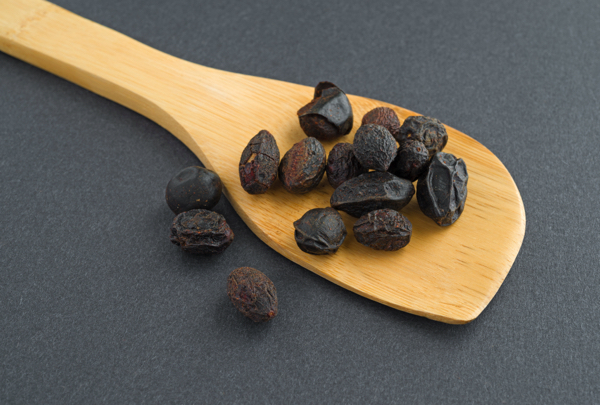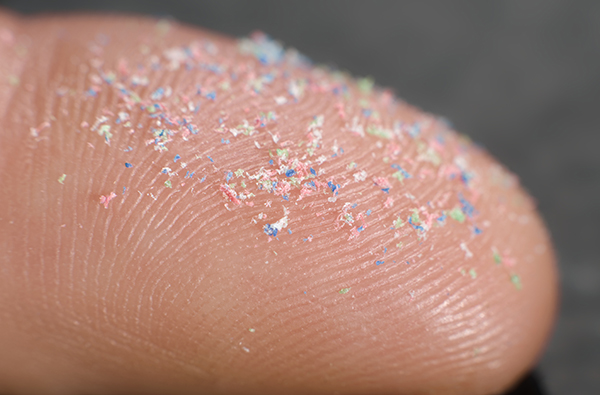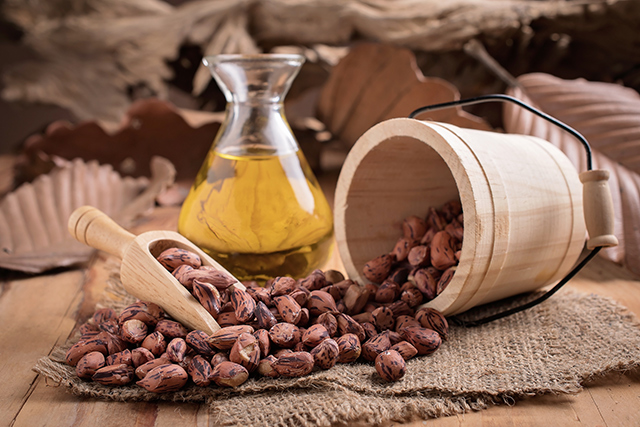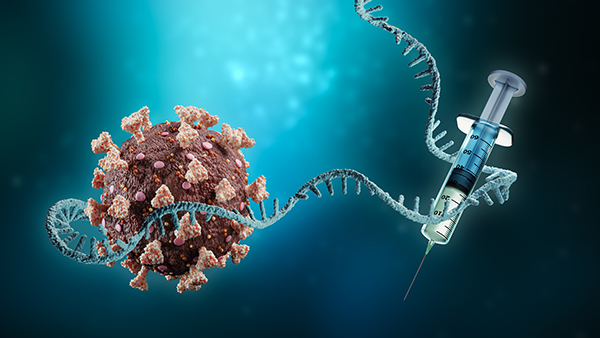Saw Palmetto: The mighty berry for men’s health and beyond
05/16/2025 / By Ava Grace

- Saw palmetto (Serenoa repens), a shrub native to the southeastern U.S., has been used for centuries by Indigenous peoples for its medicinal and nutritional properties. Its berries are particularly valued for treating urinary and reproductive issues.
- Saw palmetto is widely recognized for alleviating symptoms of benign prostatic hyperplasia (BPH), such as frequent urination and weak urine flow, by inhibiting the conversion of testosterone to dihydrotestosterone (DHT). It also shows potential for supporting hair health, hormonal balance in women (e.g., PCOS) and urinary tract health in both sexes.
- Indigenous tribes consumed saw palmetto berries fresh, dried or as an herbal tea, and used the leaves for weaving. Today, they are commonly available in supplement form (capsule, extract or powder) and can also be infused into oils and tinctures for medicinal use.
- While not a mainstream ingredient, saw palmetto berries can be incorporated into recipes like smoothie bowls, herbal teas, energy bites, salad dressings and infused honey, offering a palatable way to enjoy its health benefits.
- Modern research continues to explore saw palmetto’s anti-inflammatory, antioxidant and potential anticancer properties, though more studies are needed. Saw palmetto remains a versatile and valuable herbal remedy with a rich history and diverse applications.
Saw palmetto (Serenoa repens), a small palm-like shrub native to the southeastern United States, has long been revered for its medicinal properties. Its dark, olive-like berries have been used for centuries by Indigenous peoples as both food and medicine.
Today, saw palmetto is most commonly recognized as a natural remedy for benign prostatic hyperplasia (BPH), a non-cancerous enlargement of the prostate gland that commonly affects older men. However, its benefits extend far beyond prostate health, making it a versatile and valuable addition to the world of herbal medicine.
The healing power of saw palmetto
Saw palmetto is perhaps best known for its ability to alleviate symptoms of BPH such as frequent urination, weak urine flow and nighttime awakenings to use the bathroom. Research suggests that saw palmetto berries’ active compounds, which include fatty acids and plant sterols, can inhibit the conversion of testosterone to dihydrotestosterone (DHT), a hormone linked to prostate enlargement. By reducing DHT levels, saw palmetto berries help shrink the prostate and relieve urinary symptoms. (Related: Saw palmetto found to be better than drugs when it comes to improving prostate health.)
Beyond treating BPH symptoms, saw palmetto is also known to support hair health and is particularly helpful to people with androgenetic alopecia (male-pattern baldness). Its anti-androgenic properties may help slow hair loss by blocking DHT’s effects on hair follicles. Additionally, saw palmetto is sometimes used to address hormonal imbalances in women, such as those associated with polycystic ovary syndrome (PCOS), and to support urinary tract health in both sexes.
Saw palmetto goes by several common names, reflecting its widespread use and cultural significance. It is often referred to as sabal, cabbage palm or simply palmetto. The name “saw palmetto” comes from the plant’s saw-toothed leaf stems, which resemble the teeth of a saw. Indigenous tribes, such as the Seminole and Miccosukee, called it “tala” and used its berries as food and medicine.
Appearance and flavor profile
Saw palmetto berries are small, dark and oval-shaped, resembling olives or large blueberries. When ripe, they turn a deep purple-black color and have a slightly oily texture. The taste is often described as bitter and pungent with a hint of sweetness. This unique flavor profile makes saw palmetto berries less appealing as a standalone snack but ideal for incorporation into herbal remedies and culinary creations.
Historically, Indigenous peoples consumed saw palmetto berries fresh, dried or in herbal teas to treat urinary and reproductive issues. They also used the plant’s leaves to weave baskets and thatch roofs, showcasing its versatility. Today, saw palmetto is available in the form of capsules, tablets, liquid extracts and powder. Saw palmetto supplements are typically standardized to contain a specific percentage of fatty acids, ensuring consistent potency.
For people who prefer a more traditional approach, saw palmetto berries can be brewed into a tea or infused into oils and tinctures. Its bitter taste can be balanced with honey or combined with other herbs, such as nettle or pumpkin seed, to enhance its benefits.
Culinary uses and recipe ideas
While saw palmetto is not a mainstream culinary ingredient, its berries can be incorporated into recipes. Here are a few creative recipe ideas:
- Saw palmetto smoothie bowl – Blend frozen berries, banana, almond milk and a teaspoon of saw palmetto powder. Top with granola, chia seeds and fresh fruit for a nutrient-packed breakfast.
- Herbal saw palmetto tea – Steep dried saw palmetto berries together with ginger, cinnamon and a touch of honey for a warming, medicinal beverage.
- Saw palmetto energy bites – Mix saw palmetto powder with oats, almond butter, dates and dark chocolate chips for a no-bake snack that supports prostate health.
- Saw palmetto salad dressing – Whisk saw palmetto oil with olive oil, lemon juice, garlic and herbs for a unique, health-boosting dressing.
- Saw palmetto-infused honey – Combine dried saw palmetto berries with raw honey and let steep for several weeks. Use the infused honey to sweeten teas or drizzle over yogurt.
One fascinating anecdote about saw palmetto comes from the early 20th century, when it was a popular remedy among American herbalists. During this time, saw palmetto was often referred to as the “plant catheter” due to its ability to improve urinary flow in men with prostate issues. Its reputation grew so strong that it became a staple in the Eclectic medicine movement, a branch of American herbalism that emphasized the use of native plants.
Today, saw palmetto continues to be a subject of scientific interest. Studies suggest it has potent anti-inflammatory, antioxidant and even anticancer properties, though more research is needed to confirm these effects.
Saw palmetto is a remarkable plant with a rich history and a wide range of health benefits. From supporting prostate health to promoting hormonal balance, saw palmetto berries have earned their place as a cornerstone of natural medicine. Whether consumed as a supplement, tea or culinary ingredient, saw palmetto offers a gentle yet effective way to enhance overall wellness.
This story is not medical advice and is not intended to treat or cure any disease. Always consult with a qualified naturopathic physician for personalized advice about your specific health situation or concern.
For more fascinating insights into superfoods and their natural wonders, visit NaturalNews.com. It’s a treasure trove of articles that will deepen your understanding of the healing power of food.
If you’re into cutting-edge technology with a health twist, try Brighteon.ai. Created by Mike Adams, the Health Ranger, this AI model is a free download that you can run on your own device. It’s all about sharing knowledge freely and bypassing the filters of censorship.
If you’re looking for a place to openly discuss everything from nutrition to natural remedies without any holds barred, check out Brighteon.com and our free speech social media platforms, Brighteon.IO and Brighteon.social, where the conversation is always lively and uncensored.
Watch an educational video on saw palmetto, a top cure for men’s prostate.
This video is from the Arukah – Holistic Health channel on Brighteon.com.
More related stories:
Saw palmetto can treat hair loss, enlarged prostates and urinary tract infections.
Saw Palmetto – Naturally reverse enlarged prostate while improving male health.
Saw Palmetto Keeps Prostates Healthy and Helps Prevent Baldness.
Prostate Diagnosis and Treatment Lags, but Research on Lifestyle Yields Clues.
Omega-3s – Fish Oils, Flaxseed Oil and Prostate Cancer – What do the Experts Say?
Sources include:
Submit a correction >>
Tagged Under:
alternative medicine, fruits, health science, herbal medicine, Herbs, ingredients, male baldness, men's health, natural cures, natural health, natural medicine, Naturopathy, organics, plant medicine, remedies, saw palmetto
This article may contain statements that reflect the opinion of the author
RECENT NEWS & ARTICLES
HealthScience.News is a fact-based public education website published by Health Science News Features, LLC.
All content copyright © 2018 by Health Science News Features, LLC.
Contact Us with Tips or Corrections
All trademarks, registered trademarks and servicemarks mentioned on this site are the property of their respective owners.




















